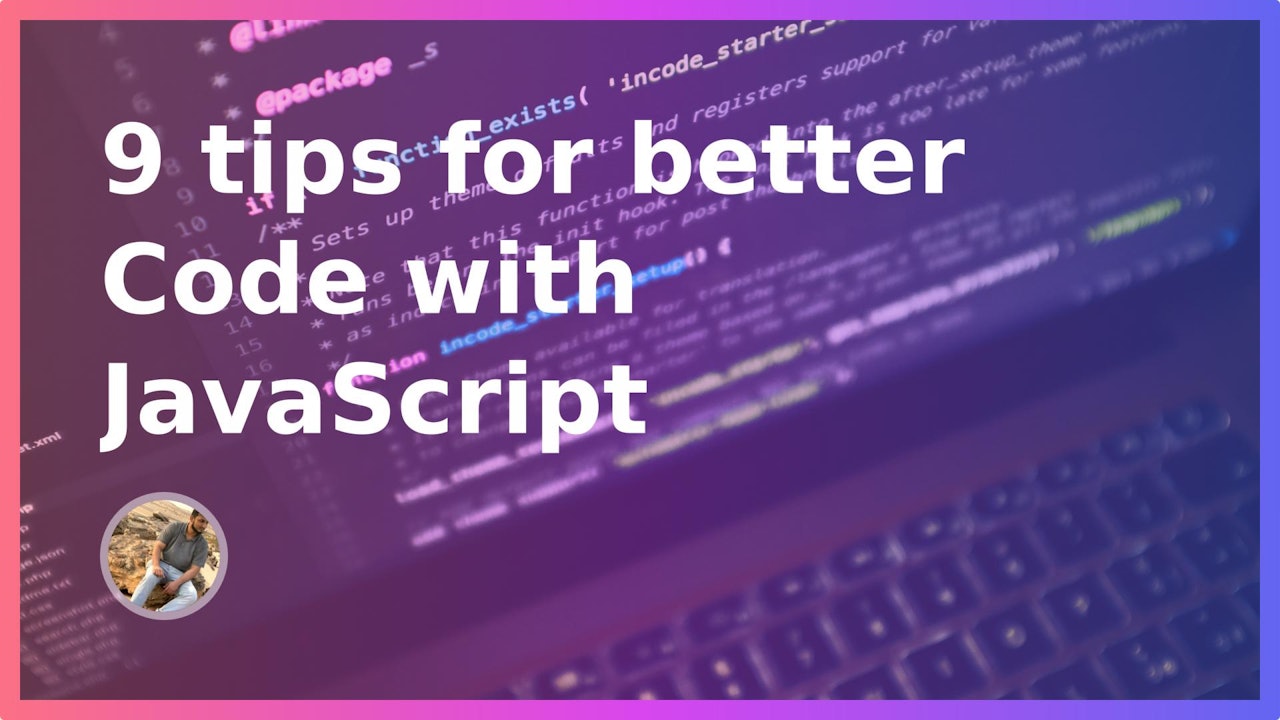Javascript is a language that's understood by the browser. It is used to load dynamic content without refreshing the page.
It would help if you made your Javascript code more readable in fewer lines of code. We have listed out some of the recommended ways to get more ways to write javascript code:
Use Template literals
Template literals are the strings (variables) that can embed in the expression. Template literals make code much simpler and readable.
For example, we can use template literal in JavaScript as below:
var code = "javascript";
var str = `
I love ${code}
I love ${code}
`;
Without template literals, we can write the above example as below:
var code = "javascript";
var str1 = "\n I love " + code + "\n I love " + code + "\n";
Using the ternary operator
In programming, you mostly have to encounter logical operations. If you want to perform logic between two statements, the ternary operator is much more readable.
let price= isMember ? '$2.00' : '$10.00'
You can read more about the conditional statements in JavaScript at this page.
Use Include statement in JavaScript
include statement in JavaScript is the simpler way to search for a string in an array and sentence.
You can use include statement in JavaScript as below:
 View Website
View Website
 View Website
View Website
 View Website
View Website
var str = "I love JavaScript.";
var word = str.includes("javaScript"); // result: true
In array, we can use include statement as below:
var str = ["taimoor", "ali", "umer"];
var n = str.includes("taimoor"); // result: true
include statement return true or false depends on the string is present in sentence or array.
Nullish operator
If you are working in 3rd party API, you may have encountered that same key-value not appear in every query. You have to check for nullish keys in JSON so that code does not throw an error.
To check for the nullish key, you can use the following.
- Conditional Statement
- The nullish coalescing operator (??) - (Recommended)
For example, we have following JSON in JavaScript as below:
var person = {
name: "Taimoor Sattar",
age: 21,
metadata: {
hobby: "football, blog"
}
}
Using Conditional Statement, we can access for the hobby key in matadata of JSON as below:
let hobby = "";
if (person.metadata){
hobby = person.metadata.hobby ? person.metadata.hobby : "";
}
Using nullish coalescing operator, we can access for the hobby key in matadata of JSON as below:
let hobby = person.metadata?.hobby ?? "";
The above code check for the hobby key in the metadata of JSON, If available, it returns the value else returns the empty string.
Default parameter value in function
Some of the functions in JavaScript allow you to send option parameters. Based on the optional parameter, the return value of the function can change.
we can demonstrate the default parameter in function through an example as below:
function outputName(name="taimoor"){
return name;
}
let string1 = outputName(); // result: taimoor
let string2 = outputName("ali"); // result: ali
Type Check for Parameter in function
Probably, there might be conditions where your function parameter has not a valid type. You can perform additional checks to validate your parameter type.
We can demonstrate this with an example as below:
function sum(a, b){
let result = (typeof a == "number" && typeof b == "number") ? a + b : null;
return result
}
sum("s", 6) // result: null
sum(4, 6) // result: 10
Wrap code in Try/Catch statement
Try/Catch statements are used to check the errors in the code. If errors, catch statement will run.
We can demonstrate this with an example as below:
try{
functionnotexist();
}catch(e){
console.log("error");
}
The above code console logs the error as the function does not exist.
Destructuring
Destructuring allows you to breakdown complex parts into chunks.
For example...
If your complex function required many parameters for execution, it's better to De-structuring the function. Rather than passing a single parameter like a string, float, etc., pass an object in function. Single Objects can hold multiple values.
We can demonstrate this example as below:
function outputName({name = "taimoor"}){ // De-structuring
return name;
}
var person = {
name: "Taimoor Sattar",
age: 21,
metadata: {
hobby: "football, blog"
}
}
let str = outputName(person); // Taimoor Sattar
Write DRY Code
DRY means (don't repeat yourself). You avoid duplication in the code to avoid confusion. To avoid confusion in the code, you can follow the following rules.
- Write a reusable function
- Define clear names for variable and function


Comments (0)